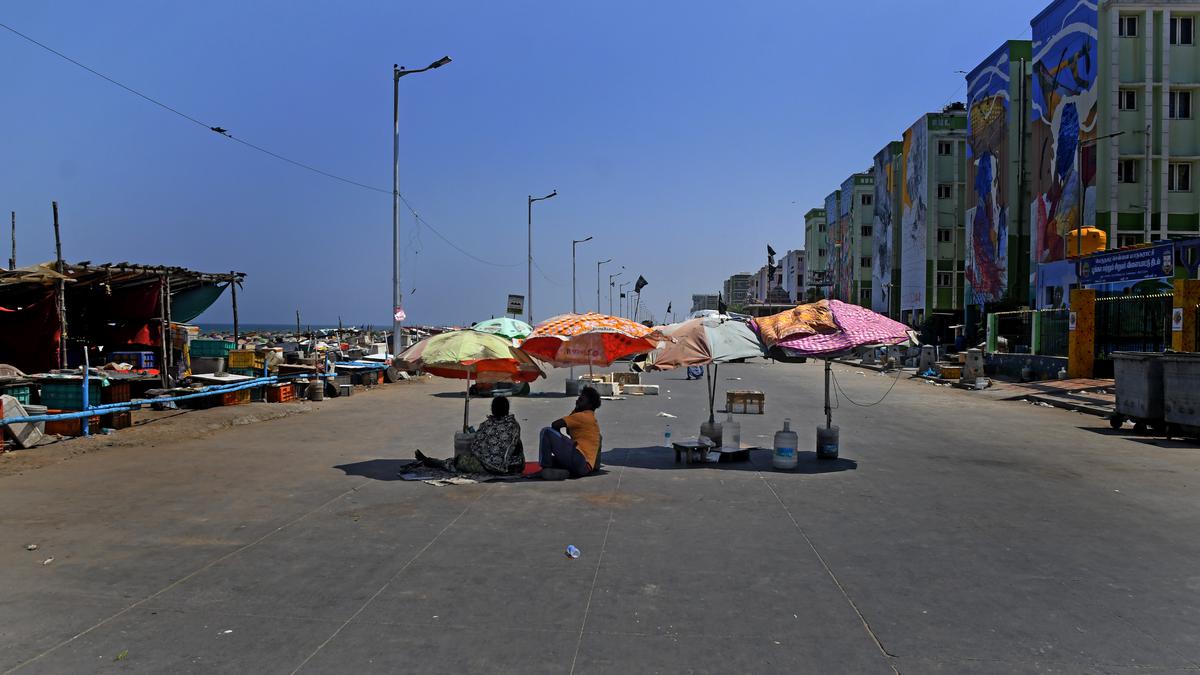
Why is Nochikuppam, home to a historic fish market, constantly in the public eye? Premium
The Hindu
Nochikuppam fisherfolk speak about the recent High Court order to evict their fish market
It has been over 20 years since fisherman K Bharathi, the president of South Indian Fisherman Welfare Association, lost his sleep over Nochikuppam fish market. “It has always been in the public eye, and we have been constantly fighting for right over our land,” says the 55-year-old. Nochikuppam, says Bharathi, finds mention along with nearby Dooming Kuppam, and Mulli Kuppam in British records, and the Nochikuppam Cooperative Society under the Fisheries Department, was formed as early as 1945.
“In my younger years, boys from the neighbourhood would head to swim in the sea with an anda, a small piece of wood from a catamaran,” he recalls, adding they would pass by women selling fish, although their numbers were much lesser when compared to today. “It is only after 1980 that the market grew,” he says.
And since, it has been in the eye of a storm. “We are constantly being told to vacate since some people feel we are an eyesore. But this is how our work is, people may not find it beautiful,” says Bharathi. Earlier this month, some stalls were removed by the Greater Chennai Corporation after a High Court order, the fisherfolk staged protests, blocking the road with fibreboats, and bringing the fish market into the spotlight again. After two weeks of back and forth, the Corporation has allowed the market to continue running until a permanent one, currently under construction, is opened.
“What will happen once we shift? Perhaps a pavement will be constructed in the place of the market and benches will be installed for walkers. But even then, we will have to pick out fish from our nets right there. Will we be asked to remove them as well, since people find them smelly?,” he asks.
Imagine a Loop Road devoid of this market: a ‘clean’ road with a beautiful view as we drive through; golden sands with no nets lying about; no Sunday morning drama as fishermen bring their nets heaving with fresh catch, to pick them out one by one, as a crowd looks on as though watching a stage performance.
These men and women have become like family for many of us in the city who buy from them every week. You can see this in the way pleasantries are exchanged, and enquiries about each other’s children are carried out over mathi and vanjiram being weighed and packed. As a result, the market is always noisy. The stalls are rickety, some of them consisting of just a handful of wooden cartons on which fish are arranged. And fish, of course, has its characteristic smell.
All these combined makes for an assault on the senses, that is the very soul of our city.

After a long, tiring day all we want is to jump right on our cosy beds and rest comfortably on our soft, fluffy pillows, right? Pillows are not quite appreciated as much as electric cars or air-fryers, for instance. Pillows are a wonderful man-made creation that has improved the lives and sleep of people across the globe. Did you know ages ago people used to rest their heads on a HARD ROCK? So how did humans go from sleeping on stones to cosy, fluffy and soft pillows today? Let’s get into the origin of your everyday pillows!










